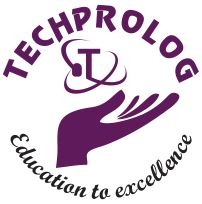Data Warehouse and Data Mining
4.7 (253 user ratings)
★★★★★ 4.7/5
ABOUT SPECIALIZATION:
Data Warehouse and Data Mining
Data warehousing has revolutionized the way people perform business analysis and make strategic decisions. Every company that has a data warehouse is realizing the enormous benefits translated into positive results at the bottom line.
Data Mining is one of the most active and exciting areas of the database research community. Researchers in areas including statistics, visualization, artificial intelligence, and machine learning are contributing to this field. The breadth of the field makes it difficult to grasp the extraordinary progress over the last few decades.
Key Features/Course content
- Introduction to Data warehouse
- Difference between operational database systems and data warehouses
- Data warehouseCharacteristics
- Data warehouse Architecture and its Components
- Extraction, Transformation and Loading
- Data Modeling
- Schema Design
- Star and Snow-Flake Schema
- Fact Consultation
- Fact Table
- Fully Addictive, Semi-Addictive, Non Addictive Measures
- Fact-Less-Facts
- Dimension Table
- Characteristics OLAP Cube
- OLAP Operations
- OLAP Server Architecture: ROLAP, MOLAP and HOLAP
- Introduction
- What is Data Mining
- Definition KDD, Challenges
- Data Mining Tasks
- Data Preprocessing
- Data Cleaning
- Missing data
- Dimensionality Reduction
- Feature Subset Selection
- Discretization and Binaryzation
- Data Transformation
- Measures of Similarity and Dissimilarity- Basics
- Problem Definition
- Frequent Item Set Generation
- TheA PRIORI Principle
- Support and Confidence Measures
- Association RuleGeneration
- APRIOIRI Algorithm
- The Partition Algorithms
- FP-Growth Algorithms
- Compact Representation of Frequent Item
- Set-Maximal FrequentItem Set
- Closed Frequent Item Set.
- Problem Definition
- General Approaches to solving a classification problem
- Evaluation of Classifiers
- Classification techniques
- Decision Trees
- Decision tree Construction
- Methods for Expressing attributetest conditions
- Measures for Selecting the Best Split
- Algorithm for Decision tree Induction
- Naive-Bayes Classifier
- Bayesian Belief Networks
- K- Nearestneighbor classification Algorithm and Characteristics
- Problem Definition
- Clustering Overview
- Evaluation of Clustering Algorithms
- Partitioning Clustering-K-Means Algorithm
- K-Means Additional issues
- PAM Algorithm;
- Hierarchical Clustering-Agglomerative Methods and divisive methods
- Basic Agglomerative Hierarchical Clustering Algorithm
- Specific techniques
- Key Issues in Hierarchical Clustering
- Strengths and Weakness
- Outlier Detection
